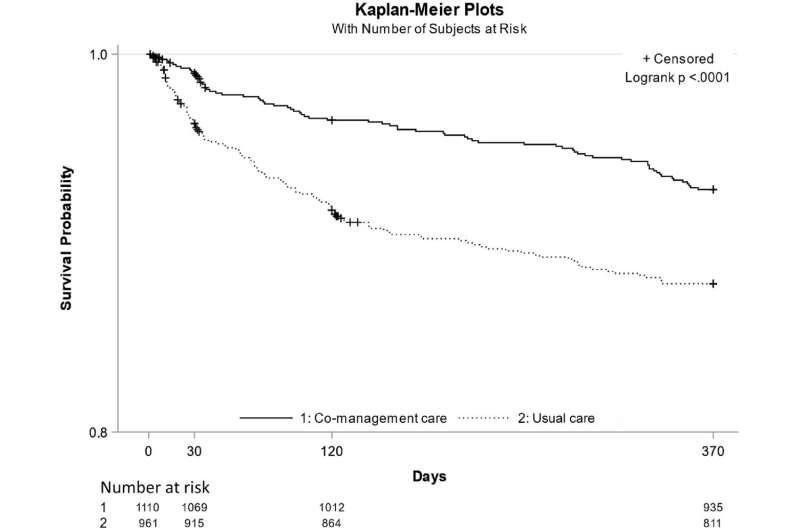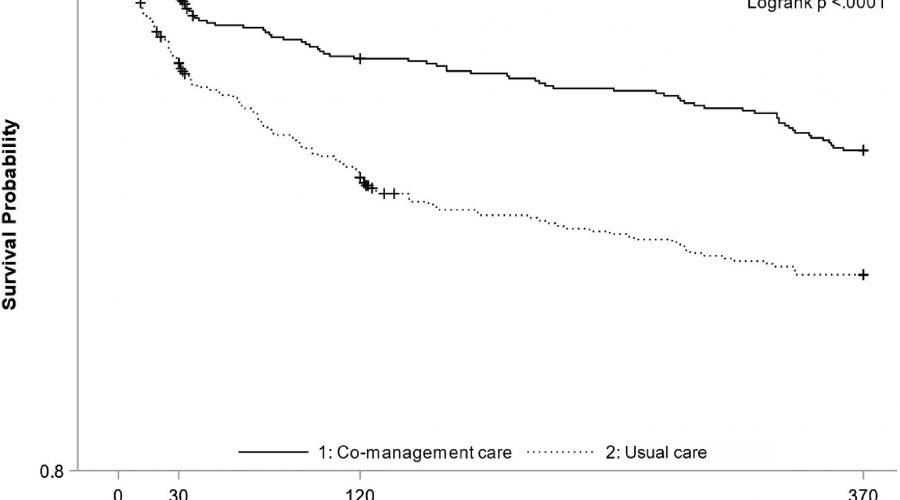New research says improved hip fracture care in China can save lives

Significant reductions in mortality occurred with improved care after hip fractures, shows a new study in China by The George Institute for Global Health and Beijing Jishuitan Hospital, published in The Lancet Regional Health–Western Pacific. By adding geriatric care to the traditional orthopedic care within a broader co-management care model, doctors were able to slash mortality by 41 percent while also reducing other complications such as delirium, pneumonia, and deep venous thrombosis.
As geriatric care in China is less common than in developed countries, the benefits of the co-management model are potentially large in terms of saving lives, improving health outcomes and reducing the burden on hospitals and the healthcare system.
“This high-quality clinical study conducted in Beijing confirms that in the face of the clinical challenge of hip fractures in the elderly, the orthogeriatric co-management care model can significantly improve the treatment effect and reduce the mortality compared with the traditional physician consultation model, which should be promoted nationwide as soon as possible,” said Professor Wu Xinbao, vice president of Beijing Jishuitan Hospital and a leading expert in the field of traumatic orthopedics.
Hip fracture among elderly is usually called “the last fracture of life,” which means the mortality of elderly hip fracture patients is very high. Co-management orthogeriatric care involves orthopedic and geriatric specialists working together. For example, the orthogeriatric care intervention included the creation of an orthogeriatric ward, and, following the recommendations of the UK guideline on hip fracture management, admission to an orthogeriatric ward, expedited surgery, geriatrician assessment, secondary prevention of fracture, pressure ulcer prevention, provision of physiotherapy, and early discharge.
“Internationally, the orthogeriatric co-management care model is the best for managing elderly hip fracture patients, but there has been no high-quality scientific evidence that the co-management model is also effective in China,” said Dr. Yang Minghui, the corresponding author of this paper and deputy Director of Department of Orthopedics and Traumatology, Beijing Jishuitan Hospital. “This study shows that in the Chinese healthcare context, the orthogeriatric co-management approach will improve health, save lives and reduce the burden on hospitals.”
The UK “Blue Book,” jointly developed by the British Orthopedic Association and British Geriatric Society, outlines six standards for high-quality hip fracture care, including admission to the orthopedic ward within four hours of patients’ presentation, receiving surgery within 48 hours from admission to the ward, minimisation of the risk of a pressure ulcer development, receiving early orthogeriatric involvement, anti-osteoporosis treatment and falls prevention. This study tracked closely with these standards.
“The World Health Organization (WHO) says that health practitioners of different specialties and different institutions should coordinate and integrate care for elderly patients. The co-management of elderly hip fracture patients by orthopedics, geriatricians and other relevant departments is based on the concept of integrated care. This study proves that the co-management model is effective in China,” said Professor Tian Maoyi School of Public Health, Harbin Medical University and Honorary Senior Fellow at The George Institute for Global Health, China.
Source: Read Full Article
